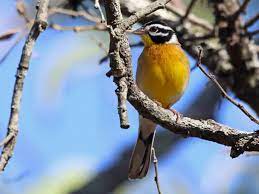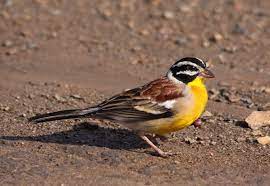Amidst the skies and lush landscapes, the yellow-billed kite emerges as a captivating and graceful raptor that soars with elegance and skill. With its distinctive appearance, aerial prowess, ecological significance, and the unique role it plays in various ecosystems, the yellow-billed kite stands as a remarkable example of avian wonder and the interconnectedness of species within our natural world. In this article, we embark on a journey to unravel the secrets of the yellow-billed kite, uncovering its characteristics, contributions, and the splendor it brings to both the heavens and the earth.

Introduction to the Yellow-Billed Kite:
The yellow-billed kite, scientifically known as Milvus aegyptius, is a medium-sized bird of prey belonging to the raptor family Accipitridae. Its striking appearance and elegant flight make it a mesmerizing presence in open habitats, from savannas and grasslands to wetlands and agricultural areas.
Distinctive Features and Physical Characteristics:
The yellow-billed kite is characterized by its sleek body, graceful wingspan, and distinctive yellow beak. Its plumage is a mix of browns and grays, providing camouflage while it glides through the skies. The vibrant yellow beak contrasts beautifully with its feathers.
Habitat and Geographic Range:
Yellow-billed kites are found across a diverse range of habitats, including woodlands, grasslands, marshes, and urban areas. Their geographic distribution spans from parts of Europe and Asia to Africa and parts of Australia.
Aerial Mastery and Hunting Techniques:
One of the most captivating aspects of the yellow-billed kite is its aerial mastery. It is renowned for its effortless gliding and soaring abilities, often using thermals to stay aloft. This raptor primarily feeds on small vertebrates and insects, which it catches on the wing.
Breeding and Nesting Habits:
Yellow-billed kites often build their nests in trees, using sticks, grass, and other materials. They form monogamous pairs during the breeding season and raise their chicks in well-hidden nests, contributing to the next generation of their species.
Migratory Behavior:
The yellow-billed kite displays migratory behavior in some regions, undertaking seasonal journeys to find suitable breeding and wintering grounds. These migrations contribute to the cyclical movements of bird populations.
Ecological Significance:
Yellow-billed kites play a vital ecological role as predators that help control rodent populations. Their hunting behaviors contribute to the balance of ecosystems by keeping prey populations in check.
Human Interactions and Conservation:
Yellow-billed kites often interact with humans in urban areas, where they are known for their scavenging behaviors. While they can be considered beneficial for their role in controlling pests, they may also be vulnerable to human activities such as habitat destruction and pollution.
Cultural Connections and Symbolism:
Throughout history, kites and raptors have held cultural significance in various societies. In some cultures, they are symbols of power, freedom, and protection. Their presence in myths, stories, and artwork reflects their impact on human consciousness.
Education and Awareness:
Studying yellow-billed kites offers educational opportunities to learn about bird behavior, ecosystems, and the importance of raptors in maintaining ecological balance. Observing their flight patterns and hunting techniques provides insights into their adaptations.
Conservation Efforts:
Protecting the habitats where yellow-billed kites thrive is essential for their survival. Conservation efforts that address habitat loss, pollution, and human disturbances contribute to the preservation of their populations.
Elegant Soarers of the Skies:
In conclusion, the yellow-billed kite stands as an elegant soarer of the skies, embodying the grace and beauty of raptors in flight. By recognizing their ecological contributions, supporting conservation initiatives, and appreciating their presence in both natural and urban landscapes, we contribute to the preservation of these magnificent birds and the harmonious balance they bring to our shared world.



















Add Comment